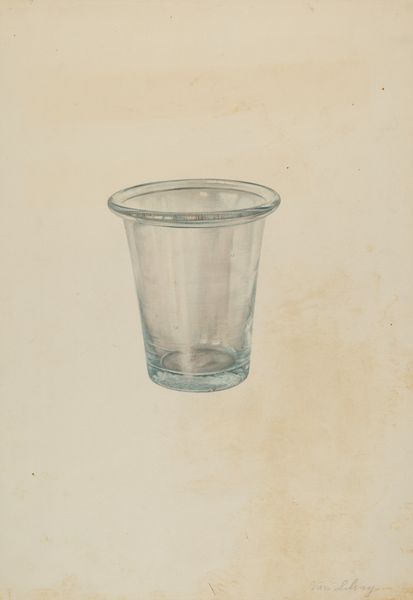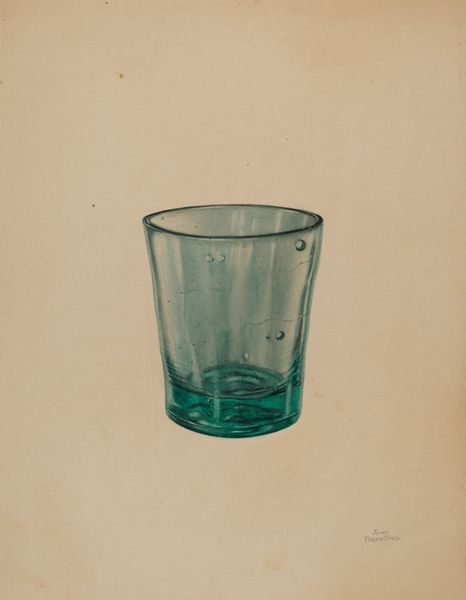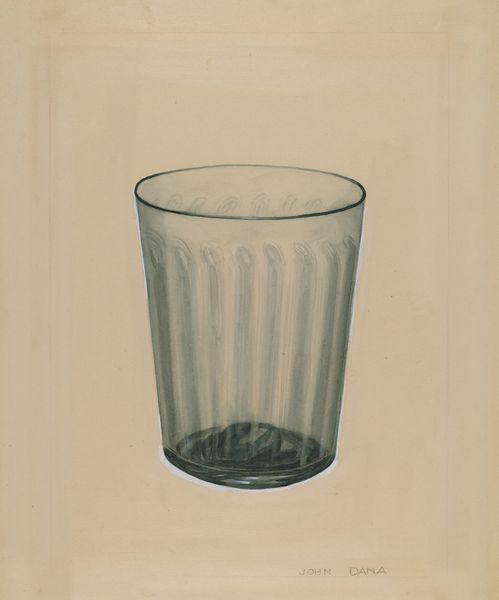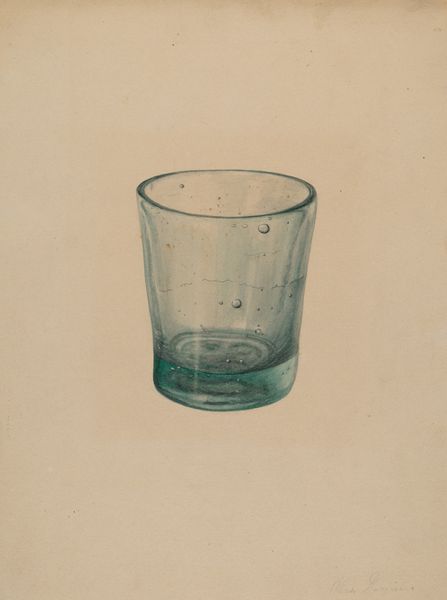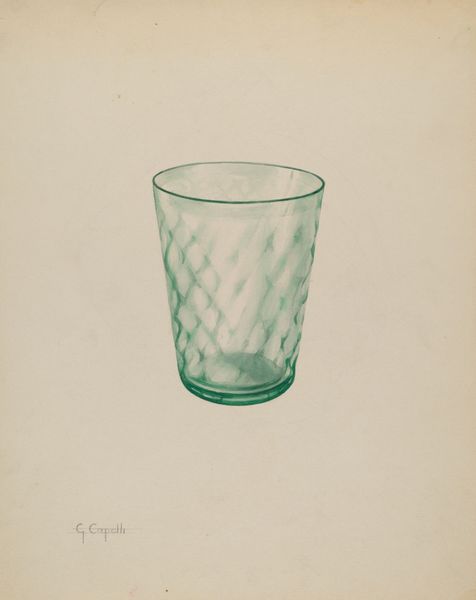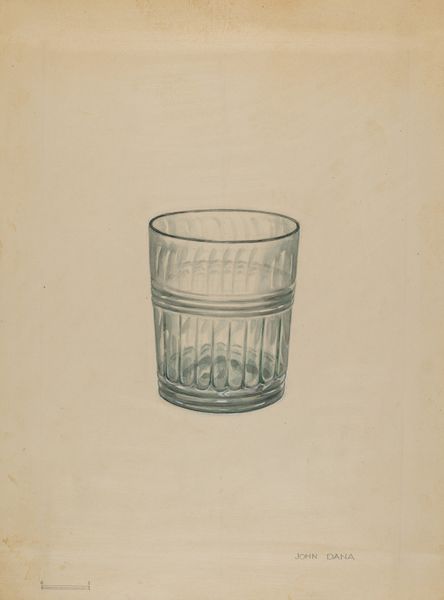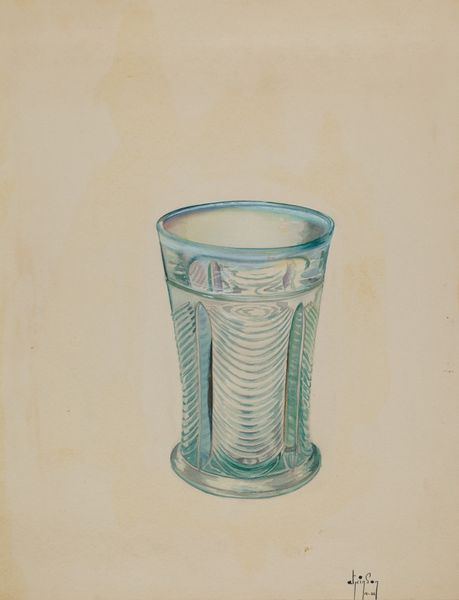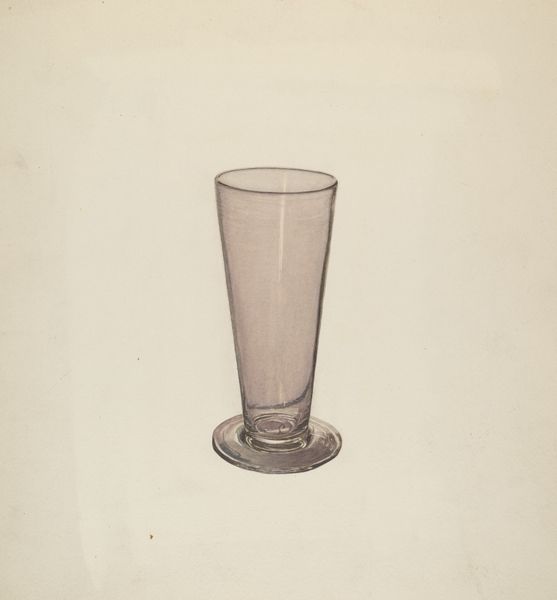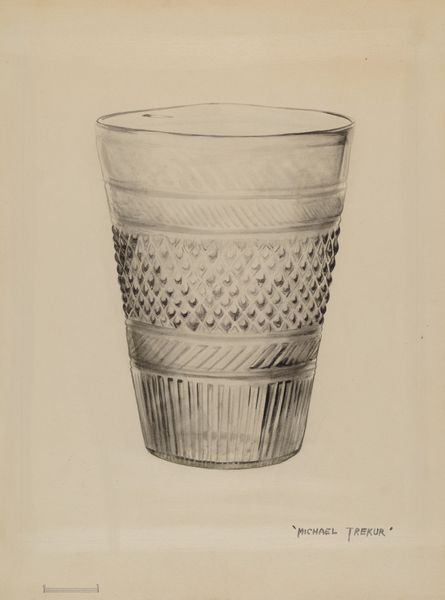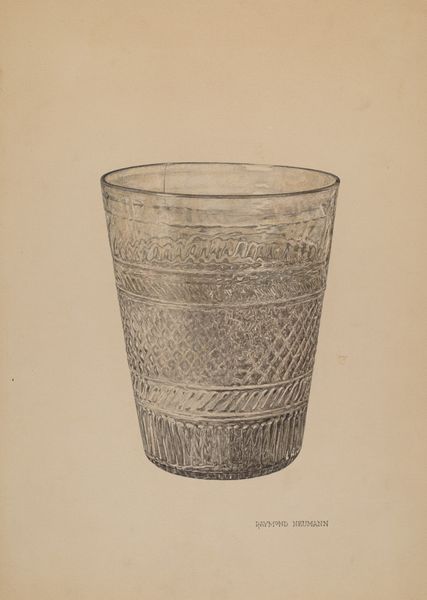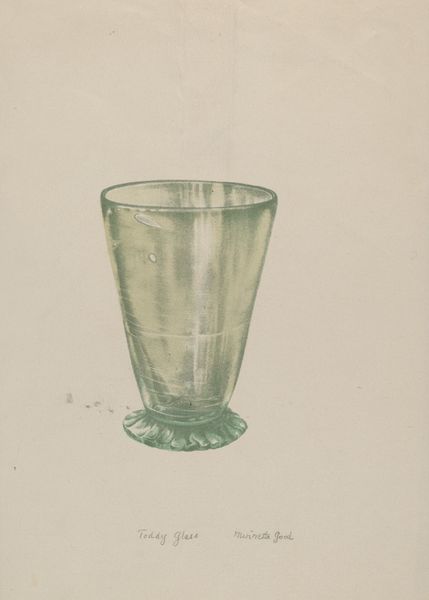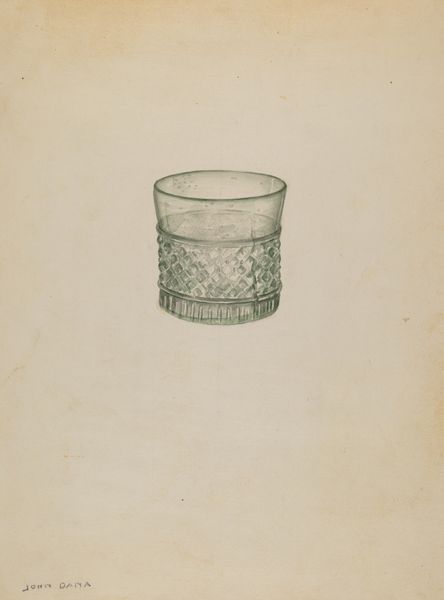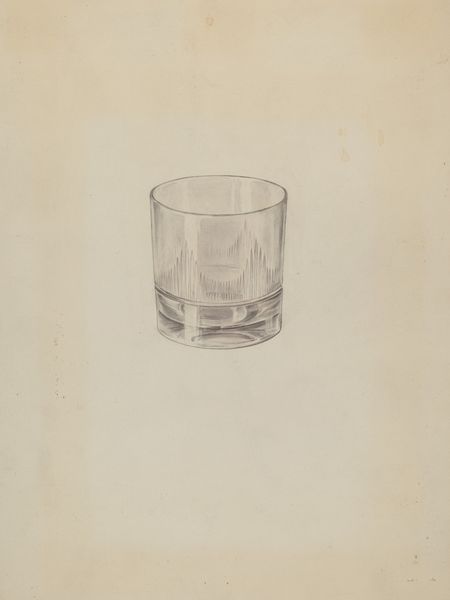
drawing, watercolor
#
drawing
#
water colours
#
watercolor
#
watercolour illustration
#
watercolor
#
realism
Dimensions: overall: 30.2 x 22.7 cm (11 7/8 x 8 15/16 in.)
Copyright: National Gallery of Art: CC0 1.0
Curator: Look at this quiet watercolor titled "Jelly Tumbler," likely dating from around 1940. It's attributed to an anonymous artist. What's your first impression? Editor: It's…simple. Almost clinically so. The muted palette – just these pale blues and browns – creates a feeling of restrained observation. It lacks dramatic flair, focusing instead on capturing the form of the glass. Curator: Indeed. The anonymity and date invite speculation about its original purpose. Was this perhaps a study? A commercial piece? These humble, everyday objects gained artistic value, representing a shared, often idealized, domesticity, especially during times of economic constraint. Editor: What's striking is how the artist meticulously renders the subtle refractions of light through the glass. The varying tonal shifts, achieved with such delicate washes, successfully create depth and volume. Curator: Precisely. Watercolor as a medium had its own history, often associated with amateurs, women, or documentation. Elevating this humble tumbler to a subject deserving such delicate handling signifies how ordinary subjects entered fine art, reflecting a cultural shift towards democratizing art's subjects. Editor: It also shows mastery over the medium, wouldn't you agree? There are no heavy outlines or forceful brushstrokes, the artist captures the transparency of glass, its cool touch with an almost meditative quietness. The subtle color variations around the base mimic, for instance, how liquid might sit. Curator: This "Jelly Tumbler" challenges viewers to appreciate the inherent beauty in the commonplace, inviting them to question traditional hierarchies within the art world itself. And by being anonymous, the focus turns onto the artwork itself, its construction, and what message one can derive. Editor: I am intrigued by how formal restraint yields unexpected depth, transforming a mundane object into a space for reflection. The composition directs all focus to the core geometric properties of the subject without distraction. Curator: It is true. Ultimately, its significance stems from what this seemingly simple watercolour reveals about how society perceives value and how those perceptions were shifting. Editor: And how a focus on materiality and the careful arrangement of colour is often all that’s needed to imbue the ordinary with aesthetic importance.
Comments
No comments
Be the first to comment and join the conversation on the ultimate creative platform.
